Penguins are flightless birds that primarily inhabit the Southern Hemisphere’s southernmost areas.
Penguins are observed in areas such as Antarctica, New Zealand, Australia, South Africa, South America, and the Galapagos Islands, to mention a few.
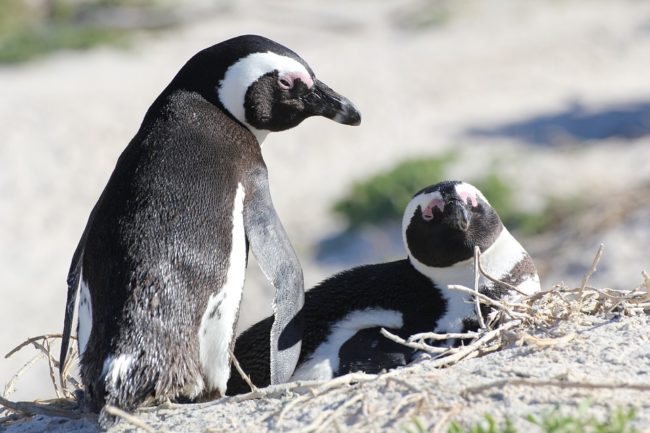
According to the Antarctica government, there are 18 species of penguins on the globe. However, this number varies from 17 to 20, depending on the source.
Penguins are the most popular birds in the ecosphere. Penguins have a vast record of achievements, including the ability to hold their breath for up to 10 minutes, surviving for weeks without food by consuming stored food, staying in freezing or sub-zero conditions and gale-force winds, and diving over 1600 feet deep.
Today, we are going to dive deep and understand – ” Do Penguins Eat Plants?” Are you ready? Let’s go!
Are Penguins Herbivores?
No, they are carnivores, and they eat Krill, crabs, squid, fish, and other seafood as their essential diet.
When penguins are active in summer, a medium-sized penguin can consume up to 2 pounds of food per day. It builds their body fat as a storehouse for the winter. This fat is not available in plants.
They do not eat as much during winter as they spend most of their time sleeping.
For Instance – An Adult emperor penguin consumes 2–5 kg (4.4–11 lb) of food per day, except during the winter season or when building up its body mass in preparation for molting.
Penguins consume up to six kilos (13 pounds) a day after the winter or molting season.
Most species consume about one-third of the amount of food they eat in winter during the summer.
For penguins such as the emperor penguin, the formation of male fat stores is of great importance as it determines mate selection.
Female emperor penguins choose mates and are often on the lookout for fat males who can lay their eggs comfortably throughout the winter.
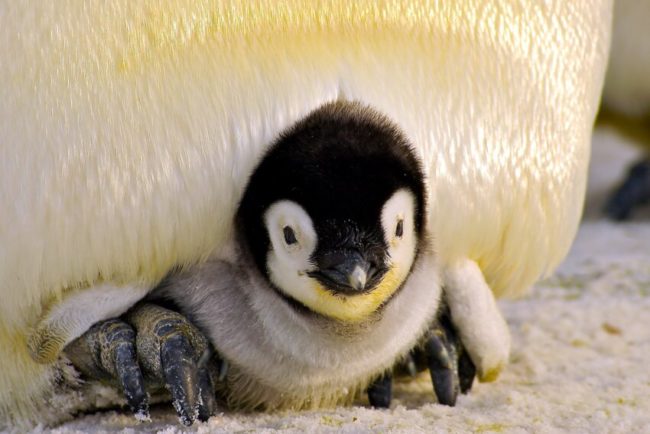
To deposit their eggs, males must rely on their body fat for roughly 2 to 3 months without eating.
What do penguins eat?
Penguins only eat meat from their prey that are animals smaller than them. These animals are the basis of every penguin’s diet.
Penguins’ bodies cannot digest terrestrial or aquatic vegetation. Thus, they don’t eat them. These penguins do not eat plants as they provide the energy and fat they require.
Penguins are carnivores. Most species of penguins commonly have a diet rich in squids, Krill, fishes, crustaceans, jellyfish, and Amphipods. What are they?
- Krill
Krill are shrimp-like organisms that are only a few millimeters long and grow to reach nearly two inches long. Krill usually travel in large groups.
Krill can be found all over the ocean. They play an essential role in the aquatic food chain, particularly in the Southern Ocean.
Antarctic Krill is a valuable food source for various marine species and aquatic birds, including penguins. All species of penguins like to eat Krill.
According to estimates, the Adelie penguin consumes over 1,500,000,000 kg of Krill every year.
- Fish
Penguins are the birds of the ocean. Penguins can catch and eat any fish that they find in the sea.
Fish make up 80% of a penguin’s diet. They will catch and eat almost any type of Fish to satisfy their hunger. Yet, they are fond of fish species such as silverfish, lantern fish, sprats, pilchards, mullets, anchovies, sardines, and more.
Fish is a precious food source for penguins because it helps them build up a lot of body fat to survive harsh winters and periods of fasting.
According to experts, the entire breeding population of Adelie penguins eats approximately 115,000 metric tons of fish each year.
- Crustaceans
There are more than 67 thousand species of crustaceans found in our oceans. The stiff exoskeleton of these animals distinguishes them, and they may grow to be quite large.
Penguins enjoy eating every type of crustaceans such as crabs, lobsters, crayfish, shrimp, Krill, barnacles, and many more. Penguins love eating Krill.
An Adelie penguin colony of five million birds would consume 8 million kilograms (17.6 million pounds) of Fish and Krill per day.
The hard beaks of penguins can shatter the hard shells of these insect-like creatures. However, they catch many of them and eat them at a go.
- Cephalopods
What are Cephalopods? Squids, octopuses, cuttlefish, and nautiluses are all members of the molluscan class Cephalopod.
A big head, bilateral body symmetry, and a pair of limbs or tentacles developed from the original molluscan foot distinguish these exclusively aquatic organisms. A tiny percentage of some penguins’ diet consists of these groups, such as the squid and cuttlefish.
Adult penguin species are capable of deep dives while foraging. They depend on their eyesight or vision for catching these cephalopods.
Penguins locate cephalopods while diving to get food. This method helps them to get their food quickly.
For Instance, an Adelie penguin, the littlest species of the penguin population, can eat 3,500,000 kilograms of squids each year.
- Amphipods
Amphipods resemble crustaceans or tiny crustaceans such as shrimp. Unlike most crustaceans, they do not have a hard covering over the thorax. They generally range in sizes from 1 to 340 mm. These tiny creatures inhabit nearly all aquatic habitats.
Amphipods, a dominant fauna on the underside of sea ice, provide food for penguins, Fish, seals, and other birds.
These larvae come in a variety of kinds. Tiny penguin species such as fairy penguins enjoy eating these small Amphipods.
“Huge penguins such as king penguins have devoured bigger Amphipods,” according to one study. Chinstrap penguin intestines contain amphipods.
Penguins can eat insects and animals on rare occasions, but they spend 75% of their time in the water, so there will not be many opportunities to eat certain animals or insects.
However, the penguins’ diets vary slightly on their species, as they have slightly different food preferences, mainly based on their size and place. Though, this slight variation in the diet reduces competition among species.
For Instance – The smaller penguin species primarily feed on the Krill and squid of the Antarctic and the subantarctic. At the same time, giant penguins like to eat more fish.
Penguins that live in temperate or tropical locations eat mainly Fish. Still, those living in the cooler climates of the Antarctic continent have to make it up mainly on Krill, tiny crustaceans that are abundant in the surrounding waters. Meanwhile, those living in the middle areas can enjoy Fish or other aquatic animals.
Penguins’ diet varies from region to region.
For Instance – African penguins can forage on their own or in small groups. Their primary diet includes small pelagic Fish such as pilchards, anchovies, horse mackerel, and herring.
African penguins can supplement their diet with squid and small crustaceans in areas lacking fish due to commercial fishing.
Penguins typically forage at depths of <80 m, and during the breeding season, they can feed 20 to 40 kilometers distant from their colony.
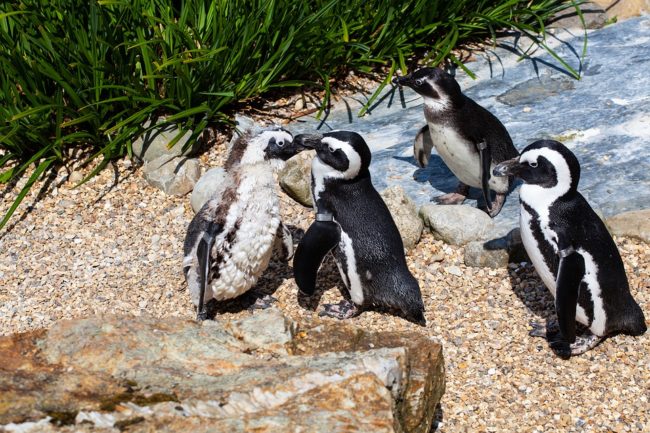
During the non-breeding season, penguins can travel far beyond the settlement. Foraging does not take place at night.
Tiny penguins can make a significant dent in an area’s food supply. For Instance, An Adelie penguin colony of five million birds would consume 8 million kilograms (17.6 million pounds) of fish and Krill per day.
Do all species of penguins eat the same food?
Smaller penguin species inhabit Antarctica, and the Subantarctic primarily feed on Krill and squid.
In comparison, the northern species of the penguins have a preference to eat mainly Fish.
Suppose you take an Adelie penguin as a general example. They prefer to feed principally on smaller Krill. Why is the name chinstrap? So-called because of the narrow black stripe of feathers around their necks.
Larger penguins species although, such as the Emperor and King penguins, eat Fish and squids.
It is thus demonstrable that the penguins’ diets and food preferences vary by species.
How much do penguins eat?
In short, an adult penguin can eat 2-3 kg in one day, but on a good day, they can eat twice this plenty of food to build up body fat stores for long winters or to feed for their chicks.
However, their composition varies from population to population, Fish is generally the essential food source, and Antarctic silverfish (Pleuragramma antarcticum) make up the bulk of the bird’s diet.
Other commonly recorded prey includes other Fish in the Notothenidae family, the species of glacial squid (Psychroteuthis glacialis), and the hooked squid Kondakovia longimana, as well as Antarctic Krill (Euphausia superba).
How Do Penguins find their food?
All species of penguins look for their food in the oceans. They have to swim several meters down the surface to catch their prey. Penguins’ bodies have proper adaptations for swimming fast after the prey.
Considering the penguins hunting techniques, you should not be surprised to know that when researching penguin behavior in the ocean, only a few people have seen a penguin hunting fish in the wild.
Penguins that do this swim straight up to their herd and shake their beak left and right to swallow their prey, just as chickens do to chew their feed.
Well, the reason behind this movement is one of the most exciting facts about all birds.
When a penguin consumes fish or squid, the supraorbital gland in its Beak absorbs the salt from the food and water that enters its mouth. Penguin makes a sneezing sound or shakes its head to release the salt from that gland.
Generally, one penguin swallows the fish straight after the other without even surface.
Large fish swallowed on the surface can be appropriately moved, always headfirst.
Professor Rory Wilson, an expert in African penguins, once released a lot of anchovies (a species of fish) in a big, round tank. These fishes created a swarm and swam around the formation. The typical behavior of the fish is known as “polarised.”
When he placed some penguin models in the water separately, nothing happened.
However, they introduced a penguin species, the banded penguin, which has a unique black stripe on its side, as do all Spheniscus penguins. The anchovies panicked and swam around, leaving the formation.
Now we know how easy it is for penguins to catch dozens of fish at one stroke. A wild penguin will have no problem fishing.
We also can understand that this type of “black bar” breaks up the swarm formation to catch the fish more easily.
Penguin is warm-blooded animals with body temperatures that are about 39 ° C. The temperature of their prey ranges from only -2 ° C to + 13 ° C. Thus, when a penguin eats, it is logical that the temperature in its stomach will drop.
To determine this drop in temperature, scientists at the “Alfred-Wegener-Institut für Polar- und-Meiersforschung” developed a unique sensor to record when and where penguins eat.
The sensor was small, indigestible, and proof against pressure, but also capable of recording the correct temperature and should come out with “gastric lavage.”
Do penguins play with their prey?
Penguins play a game of cat and mouse with their prey.
They start their quest for fish by diving at a speed of 5 to 10 km/h. They either swim horizontally or climb down the same slope at a certain depth, usually at a 5° to 85° angle. Of course, the Fish tries to escape, but it is a tough fight.
Then they dive again and repeat the sequence about half a dozen times before surfacing to breathe. They are birds that swim perfectly in the water, so they are adept at catching their prey.
But penguins need air to breathe after 6 minutes. They have to come to the surface of the water. Fortunately for them, at such depths between 100 and 200m, their prey can’t even dive because the water lacks oxygen and food for the prey.
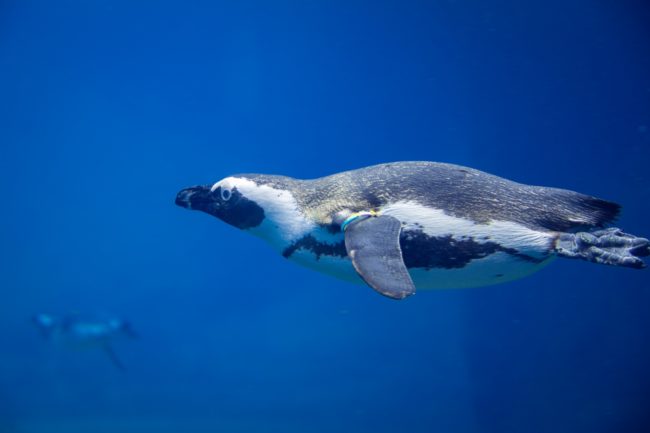
For Instance – Penguins dive to depths of up to 50 meters in search of food. The marine ray-finned fish, such as the bald notothen, can be seen swimming at this depth. They swim up to the surface of the ice and grab the victim.
How Do penguins eat?
Penguins catch their prey in the deep sea for penguins to survive and thrive. These preys are readily available nearby.
For this reason, most penguin species like to be near water, where they can easily catch their prey.
Penguin species are slightly different in their seafood preferences as some species, such as Adélie penguins, prefer smaller Krill while chinstrap penguins focus on larger Krill.
Penguins have spines on their tongues, and their beaks are powerful enough to grasp slippery food.
Penguins use their bills to catch prey. Penguins can’t chew their food since they don’t have teeth. Hence, they swallow them as a whole while swimming. They digest this food with the help of rocks.
Penguins have a gizzard, where the main digestive processes take place—additionally utilized to break down tough foods and help with digestion.
The first of two chambers of a penguin’s stomach, the proventriculus, can swiftly re-prepare food for its babies. It is a crucial organ for penguins with chicks. They store the food there and then spew when their babies are hungry.
How vital is sea ice for penguins?
Penguins prefer to seek food in the ocean of the Southern Ocean, either in ice-free areas of open water or in tidal gaps in pack ice.
As sea ice subsides, microscopic plankton at the bottom serves as the primary food source for penguins’ fish.
This sea ice additionally provides an essential resting place for penguins between dives. Thus, decreasing sea ice makes a penguin’s life exceedingly challenging.
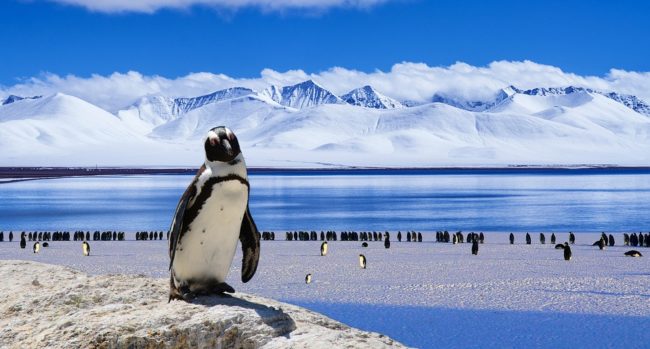
Sea ice is also the penguin’s leading source of fresh water. The end of the penguin’s Beak helps snow on land as they love freshwater.
Can penguins not drink seawater? The supraorbital gland helps penguins convert saltwater to freshwater. The presence of the supraorbital gland prevents a penguin from taking in too much salt.
Why shouldn’t penguins eat much salt? Too much salt results in becoming dehydrated; as a result, penguins shouldn’t eat much salt.
Final Thoughts
As nutritious as vegetables are, they don’t provide nutritional benefits for penguins. Penguins are primarily carnivores, and their diet consists mainly of fish, Krill, crabs, and other crustaceans. They eat meat to attain fat to survive.
The facts to get cleared with answers are indeed interesting. I hope you got the response to the factual discussion that happened one day with your friends or family where you left the space filled with sheepish smiles.
Image Source
Pair Loyalty Breed Penguins South Africa Penguin by maxpixel / CC BY
males laying on their eggs by Memory catcher / CC BY
Penguins together in a colony by maxpixel / CC BY
Penguins deep underwater by Petr Kratochvil / CC BY
sea ice provides an essential resting place for penguins by DigitalDesigner / Pixabay License
Reference Links
https://boardgamestips.com/wow/can-a-penguin-eat-plants/
https://www.sciencedaily.com/releases/2018/05/180502131819.htm
https://boardgamestips.com/wow/can-a-penguin-eat-plants/
https://rangerplanet.com/what-do-penguins-eat-complete-list/
https://www.pinguins.info/Engels/Voeding_vangen_eng.html
https://hayfarmguy.com/can-penguins-eat-vegetables/
https://en.wikipedia.org/wiki/Emperor_penguin#Feeding